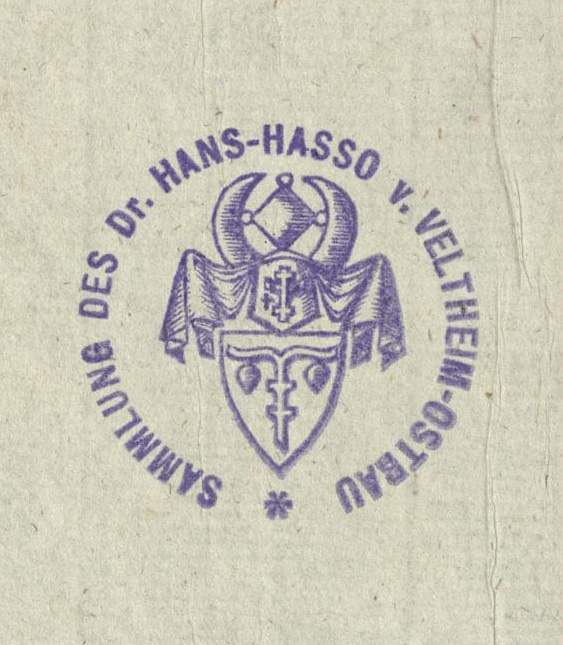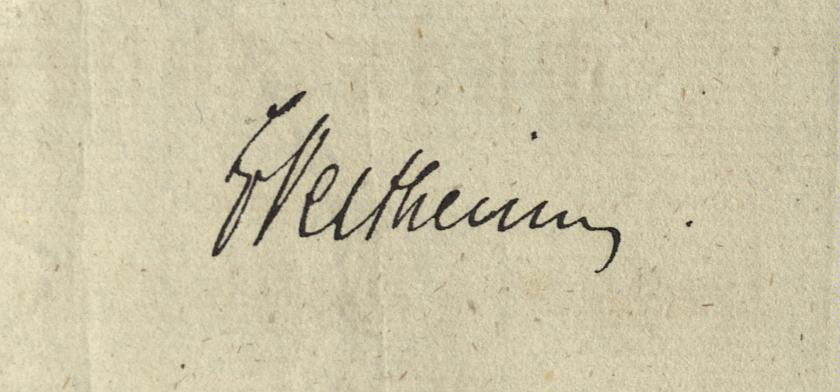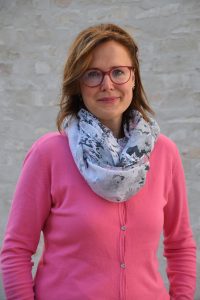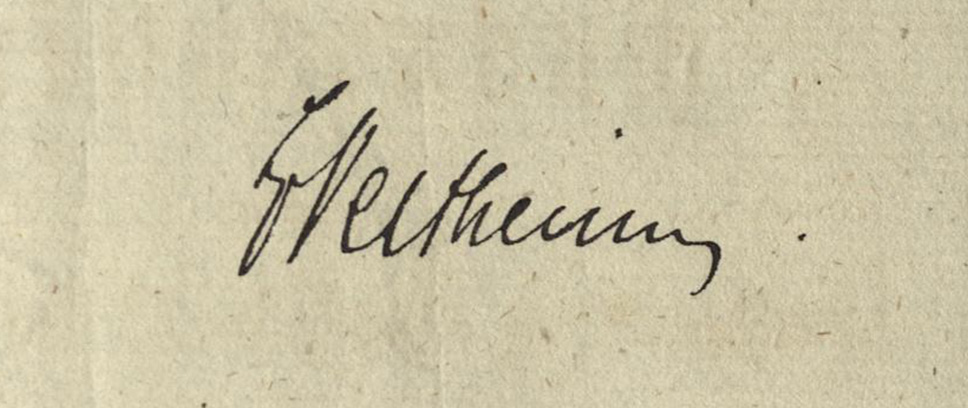
Searching for traces of Hans-Hasso von Veltheim – On the composite survey of collections in the provenance research of the DHM
Heike Krokowski and Charlotte Lenz | 26 May 2023
On 12 April 2023 – the 5th International Day of Provenance Research – the Deutsches Historisches Museum reported on its overarching provenance research within the framework of city walks offered under the title of #spurensuche (Searching for traces) and organised by the Berlin State Library and the ZLB (America Memorial Library). For those who could not be there, Heike Krokowski, provenance researcher at the DHM, and Charlotte Lenz, staff member of the DHM library, tell the fascinating story of Hans-Hasso von Veltheim in this article.
Hans-Hasso von Veltheim was born in Cologne in 1885. His father, Baron Franz von Veltheim, came from an old aristocratic family that had served several German emperors in various capacities. The family of his mother, Emma Clara, née Herbertz, was acquainted with Chancellor Otto von Bismarck.
Hans-Hasso von Veltheim earned a reputation as the author of several books about Asia, especially travel diaries from the years 1935/36 and 1937 to 1939. He belonged to the circle of Rudolf Steiner: Veltheim was an early adherent of anthroposophy and associated with the Christian Community.
Veltheim studied art history in Munich and obtained his doctorate under Artur Weese in Berne with a thesis on small churches in Burgundy up to the year 1200. Towards the beginning of the 20th century he began acquiring his own art collection with purchases from the art market. He worked as an art dealer from the end of the First World War until the late 1920s and sold or brokered the sale of old masters, but also of works from the early 19th and 20th centuries, to such customers as the Berlin publisher Ferdinand Springer.
When his father died in 1927, Hans-Hasso von Veltheim inherited Schloss Ostrau, the family’s ancestral home, located around 20 kilometres north of Halle (Saale). In the following years he renovated the baroque water castle and the castle park and furnished it with his art collections. In the rooms of the former castle brewery he had a two-storey library installed, which also accommodated the castle archive. Under its new owner, Schloss Ostrau welcomed a constant stream of visitors and became a centre of intellectual and cultural exchange.
Like most aristocrats, Veltheim received military training at an early age. He was stationed from 1911 in an airship and ballooning unit in Tegel near Berlin. During the First World War he was active in military reconnaissance. Hans-Hasso von Veltheim had an ambivalent relation with National Socialism. On the one hand, as anthroposophist he met with strong scepticism on the part of representatives of the regime and was even interrogated by the Gestapo due to his affiliation with the Christian Community. Moreover, he stood in contact with people subject to political or racial persecution like Chief Rabbi Leo Baeck or his cousin Elisabeth von Thadden, who was executed in Plötzensee in 1944 as a member of the resistance. On the other hand, he joined the NSDAP in 1937, had his 1937-1939 trip to Asia financed by the regime, and helped to promote the German Reich abroad. By the time the Second World War broke out he was too old to participate.
At the end of the war Schloss Ostrau was occupied by American troops, which at first induced Veltheim to remain there. But in the summer of 1945, territorial adjustments resolved at the Yalta Conference meant that Anhalt came under Soviet control. Veltheim’s position became precarious, and in October 1945 the Ostrau castle and estate were expropriated in the course of the land reform as one of the first large-scale landholdings in Anhalt. Hans-Hasso von Veltheim, already suffering from poor health, hastily defected to the Western Allied occupation zone.
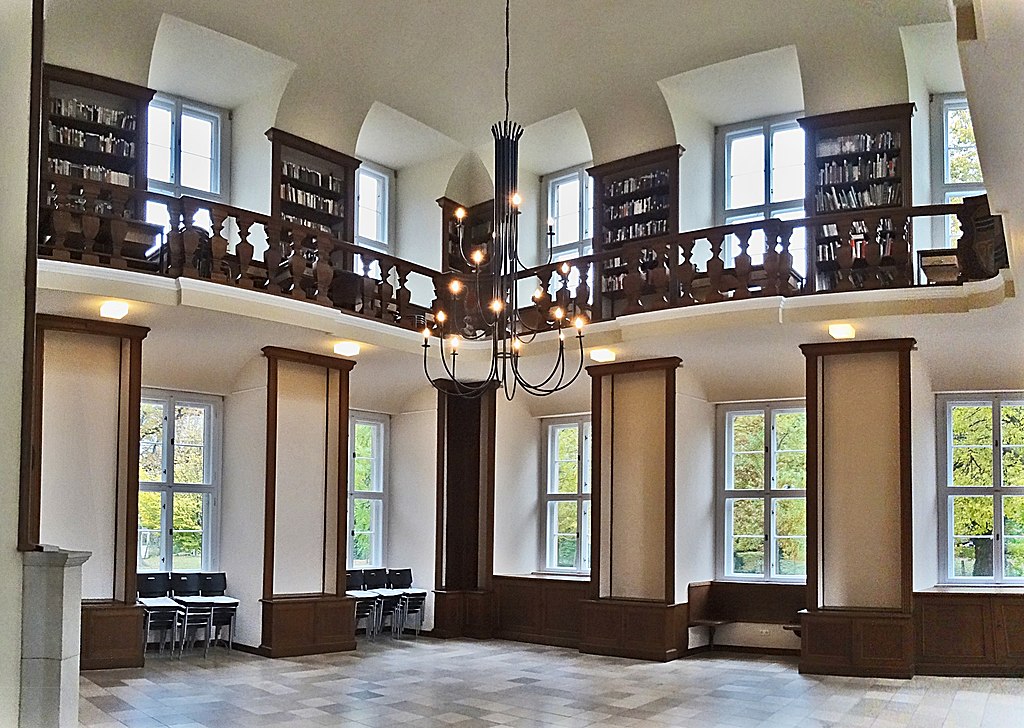
The artworks from Ostrau were transferred to Moritzburg Castle in Halle in 1949. Large portions of the castle library, some 20,000 volumes, came to the Halle University Library. The university used the castle itself to house the Institute of Practical Biology; in the mid-1950s the Ostrau elementary school was established in the castle, where it is still located today.
After fleeing to the western zone, Veltheim no longer settled in one place. At first he was taken in by family members in Lower Saxony, but in the following years accepted invitations to stay in the apartments or houses of friends in such places as Hamburg, Solingen, and his native city of Cologne. His health deteriorated appreciably. He died in 1956, aged 70, in a sanitorium on the island of Föhr.
Veltheim could save only a small portion of his effects. When he left Ostrau, he took only a few of his possessions with him. But he had previously given some of his valuables to persons who had gone to the West ahead of him. Among these objects was the bronze statue of a “Striding Buddha” that he had purchased in Bangkok in 1938 during his trip to Asia and which is now owned by the Cologne Museum.
Today, books of Veltheim-Ostrau provenance are found not only in the Halle University and State Library, the Magdeburg University Library, the Dessau State Library, and the Berlin State Library, but also in the library of the DHM. The museum’s group of Ostrau books were recently studied in a project on proactive provenance research in which the stocks of the DHM Library were systematically examined for works of potentially critical provenance.
In the first half of the 1950s, the still young library of the Museum für Deutsche Geschichte (MfDG), one of the predecessors of the present DHM Library received numerous duplicate copies from the above mentioned Halle University and State Library. After the war, that library was the central collecting point for books from expropriated estates and noble houses throughout Saxony-Anhalt, which not only expanded the library by more than two million volumes, but also raised its status from a university library to the Halle University and State Library. Among these books were many from the Ostrau castle library. Exact lists exist of the publications that were given to libraries in the territory of the GDR, including books that had subject matter suited to the Museum für Deutsche Geschichte. List 55 contains the books that had belonged to Hans-Hasso von Veltheim, of which six volumes came to the MfDG’s library in Berlin.
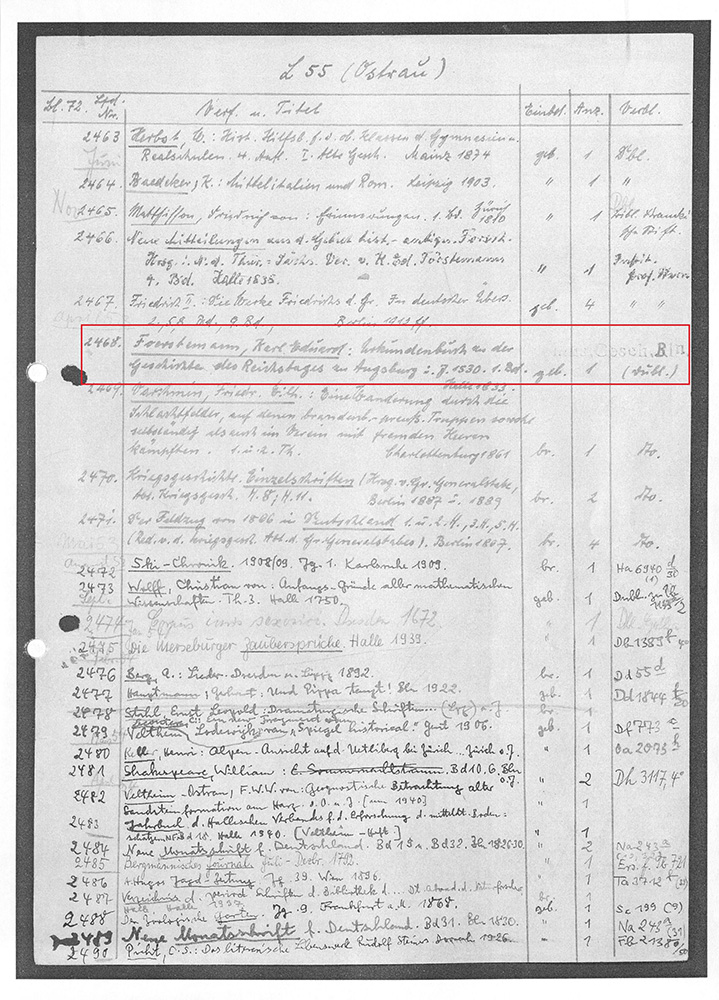
When these books were examined in the project, one volume could actually be identified as coming directly from the Veltheim collection. It is a book by Karl Eduard Förstemann, “Urkundenbuch zu der Geschichte des Reichstages zu Augsburg im Jahre 1530/31”, which deals with documents from the history of the Augsburg Reichstag.
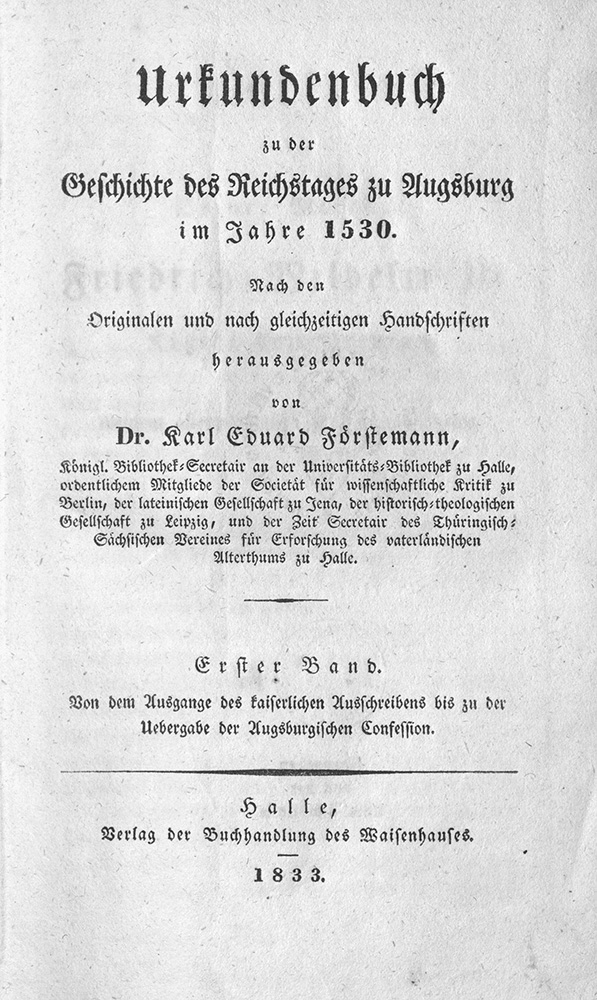
A stamp of ownership and the handwritten name of Veltheim show that it was once in his library. Since the book collection of the Museum für Deutsche Geschichte was taken into the DHM, this work is now part of the stocks of the DHM Library.
|
|
Heike KrokowskiHeike Krokowski ist wissenschaftliche Mitarbeiterin in der Provenienzforschung des Deutschen Historischen Museums |
|
|
Charlotte LenzCharlotte Lenz ist stellvertretende Leiterin der Bibliothek des Deutschen Historischen Museums |
